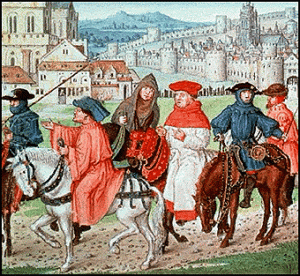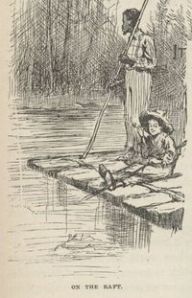
The Road
The ‘road’ in literature is a theme, a symbol, an organising principle. It can be said that every work of literature, like every road, offers up a unique journey. We’re readers and travellers alike, reading the road, travelling through pages and passages and words.

The earliest known example of ‘the road’ in Western literature appears in one of the earliest known works: the 12,000-line Greek poem, known as The Odyssey was written by Homer in the 8th Century B.C.E. and chronicles the adventures of Ulysses as he makes his way home after the Trojan Wars. It is commonly thought that by listening to the stories in the poem, the ancient Greeks learned standards of honourable behaviour, which became the foundation of their society.

The Book of Wonders by Marco Polo records his impression of the long years of travels in Persia, China and Indonesia, which were undertaken between 1271 and 1298. It’s said that Christopher Columbus carried a heavily annotated copy of the book as he attempted to reach the East Indies by sea two centuries later.

The Divine Comedy by Dante Alighieri, written between 1308 and 1321, is considered one of the central works of Western literature. In it, Dante travels to hell, purgatory and paradise.

The Canterbury Tales is a collection of stories written by Geoffrey Chaucer in the 14th century, two of them in prose, the rest in verse. A group of the faithful on a pilgrimage from Southwark to Canterbury to visit the shrine of Saint Thomas Becket at Canterbury Cathedral seek diversion by telling stories to one another. In the voices of characters that are representative of social ‘types’, Chaucer brilliantly exposes human faults and frailties.

In Ariosto’s long epic poem Orlando Furioso (1532), Orlando suffers from unrequited love for the pagan princess Angelica, who traipses around the countryside trying to avoid him and all other men. Ariosto pays little attention to historical and geographical accuracy: the action moves from Japan to the Hebrides and even to the moon and the bottom of the sea.

Cervantes’ The Ingenious Hidalgo Don Quixote of La Mancha was published in 1604. Alonso Quixano renames himself ‘Don Quixote de la Mancha’, dons an old suit of armor, and designates a neighbouring farm girl as his lady-love, Dulcinea del Toboso (who, by the way, knows nothing of his ardour), and sets off on a quest. Through the use of verbal playfulness and by exploring the individualism of his characters, Cervantes helped move beyond the narrow literary conventions of the chivalric romance literature.

The Adventures of Huckleberry Finn, published by Mark Twain in 1884 is one of the first American novels to be written in the vernacular and has become an enduring image of escape and freedom. Huck Finn and Jim, a runaway slave, journey on the Mississippi River, Their adventures satirise antebellum society of the American South, racism and contemporary attitudes towards slavery.

Two roads diverged in a wood, and I –
I took the one less travelled by,
and that has made all the difference.
‘The Road Not Taken’ is a poem by Robert Frost that has become a figure of speech.

In Light in August (William Faulkner, 1932), the road take on central importance. In the opening scene, Lena Grove walks along, pregnant, about to enter Jefferson, thinking, “I have come from Alabama: a fur piece. All the way from Alabama a-walking. A fur piece.” At the end of the novel, less than two weeks later, she has given birth to a baby and still has not found the father of her child as she sits on a wagon leaving Jefferson and says, “My, my. A body does get round. Here we ain’t been coming from Alabama but two months, and now it’s already Tennessee.”

Jack Kerouac’s On the Road was originally written in scroll form, one continuous sheet written in just about 3 weeks in April 1951 from his Manhattan apartment. Kerouac prefigured the longings of hordes of youngsters who, following the example of his characters, took to the highways in search of freedom and adventure.

From Invisible Cities by Italo Calvino (1972): “In a garden sit the aged Kublai Khan and the young Marco Polo-Tartar emperor and Venetian traveller. Kublai Khan has sensed the end of his empire coming soon. Marco Polo diverts the emperor with tales of the cities he has seen in his travels around the empire: cities and memory, cities and desire, cities and designs, cities and the dead, cities and the sky, trading cities, hidden cities. Soon it becomes clear that each of these fantastic places is really the same place.” –italo calvino

Zen and the Art of Motorcycle Maintenance: An Inquiry into Values, Robert Pirsig (1974) was originally rejected by 121 publishers. It later sold over four million copies. Ostensibly about a 17 day motorcycle journey across the US taken by the narrator and his son, Chris, the narration swerves into philosophical discussions of epistemology, ethics, emotions, the philosophy of science, and the metaphysics of quality.

The Road, 2005 novel by Cormac McCarthy, was inspired by a visit to El Paso Texas he took with his own son. It’s a post-apocalyptic fable of a journey towards the sea taken by a father and his young son over a period of several months, across a landscape blasted by an unnamed cataclysm that destroyed all civilization and, apparently, most life on earth. The novel was awarded the 2007 Pulitzer Prize for Fiction and the James Tait Black Memorial Prize for Fiction in 2006.
Great post, Adair.
Very interesting.
I loved The Road by McCarthy. It disturbed me in a good way and I found I couldn’t leave it alone – not until I had finished. Even then, it stayed with me for a very long time.
What an interesting post, Adair.
I especially loved the collection of art works you’ve put together here. For me, the highlight is Picasso’s brilliant black on white squiggled drawing of Don Quixote and Pancho. Look at Pancho’s donkey – you can tell what it’s thinking by the tilt of its head.
Ah, what a man (Picasso, I mean). Thanks, Adair.
May we add two seminal references to the road in literature from the “East”, as we in the “West”, may call it, but i think of it as Asia? The Tao Te Ching, the Way that is every way and the only way, although there are other ways – and contrary to what Led Zeppelin sing, there are more than “two roads, you can go by”.
Also, Pather Panchali (The Song of the Road) , Bibhutibhushan Bandopadhyay from 1928.
Blazenka, You are so right! Normally, I try to keep the list in my “In Search of . . .” series to ten. But in this case, I went over and still couldn’t include all the ones that came to mind. I think “The Road 2” is in order. I love the idea of East/West. I’d like to know of stories from the Indigenous peoples of the world. I bet there are many good ones. Adair
“Hi:
Two things
1) I’d like your permission to (re)print your article on ‘The Clone Wars’ for our website
2) I was hoping we could use your ‘scribing’ talent for our website.
The Best Shows Youre Not Watching (dot) com [all one word]
‘The Clone Wars’ is one of our featured shows. We’re hoping to round up a few people who can occasionally contribute perspective (via an article/blog) on the shows – maybe a recent episode, future direction, plot shortcomings etc.
What’s in it for you?
Primarily a larger audience back channeled to your blog. We don’t pay but the site has a lot of promise and we’re pretty excited about getting it off the ground. Let me know what you think.
Thanks
Thanks, this sounds very interesting. Tell me more.
[…] once wrote these words on my kitchen wall so that my kids would grow up thinking that “traveling“ is part of life and a source of poetry. Here’s more: “Not I, nor anyone […]
[…] once wrote these words on my kitchen wall so that my kids would grow up thinking that “traveling” is part of life and a source of poetry. Here’s more: “Not I, nor anyone […]